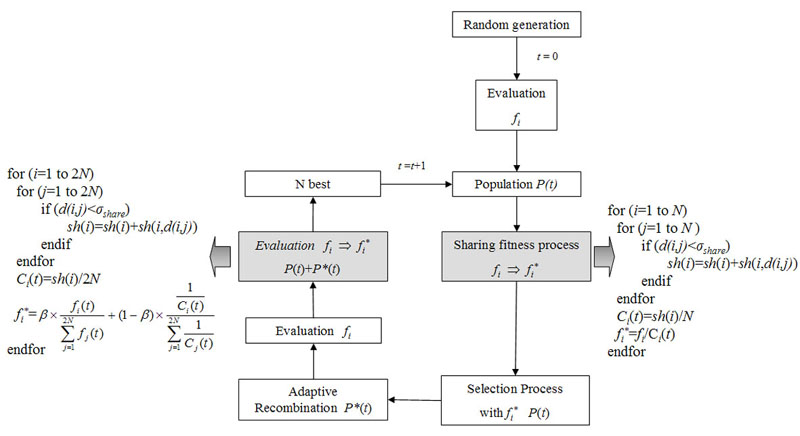|
Fitness
sharing method is applied but with a modified
sharing function. In addition, it uses an adaptive
mutation and a substitution system based on quality
as well as proximity to other solutions, by
gathering parent and children populations.
To do the
selection, the original fitness sharing methods
(without being continuously updated) will be used,
but instead of using the sharing function to
penalize the quality, the
Ci(t)
density function will be
used as follows:

Once individuals are selected for reproduction
the crossover and mutation operator starts, with the latter
operator adaptive in accordance with the density of each
individual. Thus, the higher the density function of
individual i, the higher its probability should be to mutate in order to increase the
diversifying power of the operator, but limiting its
value to the range (0, 0.5) in order to ensure an
appropriate convergence.

Lastly, the substitution is
performed by combining parents and children
populations, calculating the value of the adequate
quality of each individual, and sorting the joint
population from the highest to the lowest depending on
this value, and selecting the best Ns. Replacement parameter
β
allows us to give more importance (weight) to quality or to density
in the substitution.

The
joint action of sharing and substitution firstly
permits classifying the historical information of
the search (parents) into niches, and secondly,
transmitting it together with the new information
created in the reproduction (children) to the
subsequent iterations, regulating the transmission
by quality and proximity.
This process is
shown in the following flowchart:

|

